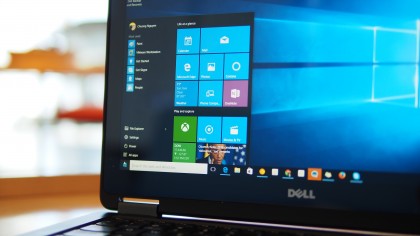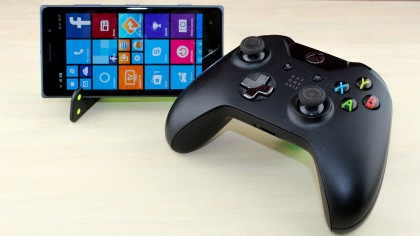Apple versus Microsoft: who had the better 2015?
More innovation out of Redmond than Cupertino

2015 in summary: Microsoft continued its transformation into a business school tale of caution, while Apple once again raked in enough money to make Scrooge McDuck's money bin look like a coin jar.
Dips in Surface sales, the contraction of the PC market and the failure of Windows Phones drove down overall revenue in Redmond. Microsoft also quietly laid off another 1,000 staff, mainly from the struggling Nokia division.
Apple, meanwhile, added 9,000 jobs and reported record revenue thanks to China's healthy appetite for the iPhone. But did it go far enough in re-establishing itself as a tech innovator? In short: no.
Earnings reports aside, 2015 was a banner year for Microsoft, one that has set the company off on a course of great innovation.
Windows 10
Case in point: operating systems. Windows 10 is the new driver of Microsoft's business – and of its devices: PCs, Surfaces, Lumias, Band 2s and Xbox Ones. They all will run on Windows 10. But Apple's OS du jour, El Capitan, doesn't have nearly the same ambition.

The new Mac OS is safe and reliable – which, to be fair, is usually what most users want out of an operating system. But El Capitan is just spit, polish and Split View for an already sturdy platform. Windows 10, on the other hand, brings brand new business opportunities for Microsoft.
The "platform for all" allows developers and IT managers to deploy their apps across the entire Windows 10 ecosystem. This is particularly appealing for enterprise developers, whose customers often require access on more than one device.
Sign up to the TechRadar Pro newsletter to get all the top news, opinion, features and guidance your business needs to succeed!
And now that PC shares its apps with mobile (and vice versa), the already robust Windows 10 user base – 120 million and counting – makes the Windows Phone appealing to developers. With Universal apps, Microsoft finally has a value proposition to pitch to developers that rivals Apple's "make billions with iOS." (Well, it's not quite as good as that, but it's better than the "pretty please with sugar on top" value prop it had before.)
The mobile solution
Mobile has been the Microsoft bugbear. Its presence in the phone market is practically non-existent. But Windows 10 gives Microsoft an entirely new mobile strategy – and it just might actually work.
Thanks to subsidies from carriers, expensive cell phones have never "felt" expensive. Now that those subsidies are ending, consumers are going to have to pay full price for their new iPhone, either up-front or through monthly installments tacked onto their phone bill. Many consumers are balking at these "new" prices and opting for budget phones instead.
The Lumia, Microsoft's phone running Windows 10, could be a top choice for budget conscience consumers. Forget China, where Apple is already making significant headway with its iPhone, Microsoft would be happy if Chattanooga adopted Windows Phones. If Windows 10 and Universal apps deliver an app marketplace that rivals iOS – or at east Android – then the Lumia might just pay the dividends Microsoft has been hoping for since it acquired Nokia.

Contrast Microsoft's mobile strategy with Apple's, which in 2015 went with a more familiar approach. It wasn't unwise. A loyal customer base and an already dominant share of the market meant the iPhone 6S and iOS 9 didn't need game-changing or even "risky" features to generate sales.
A conservative philosophy will yield conservative products and the iPhone 6S is certainly not liberal. Its major innovation, 3D Touch, is basically the print preview of functions. Universal apps it is not.
And unlike Microsoft, Apple showed no signs of unifying its operating systems. Apple is in the hardware business – unified software would undercut its business model. If iPhone ran OS X and worked like a MacBook, there would be much less incentive for consumers to buy both products.